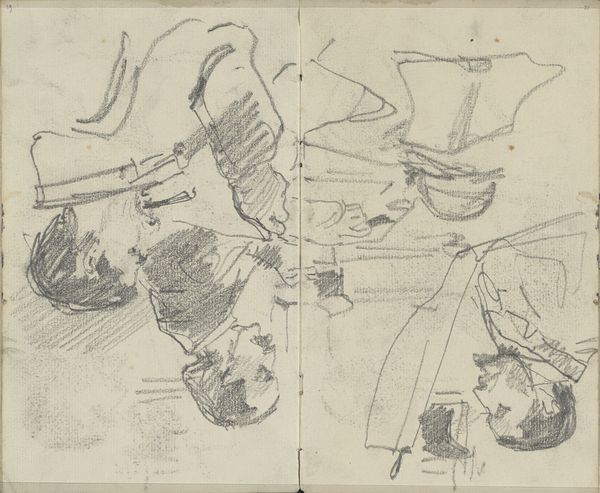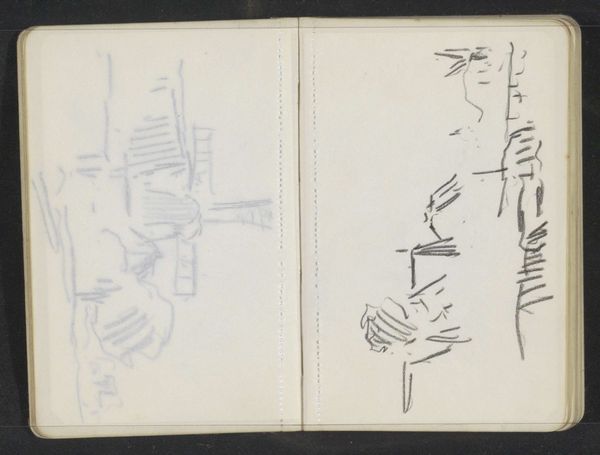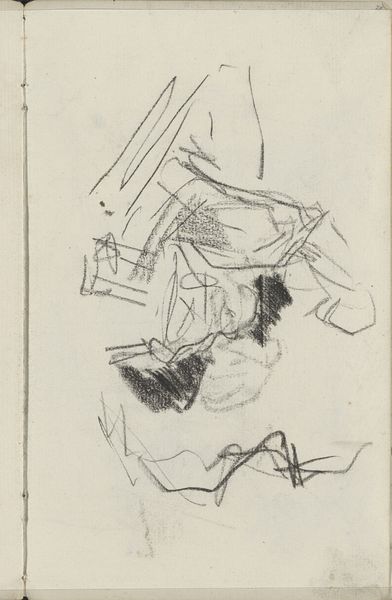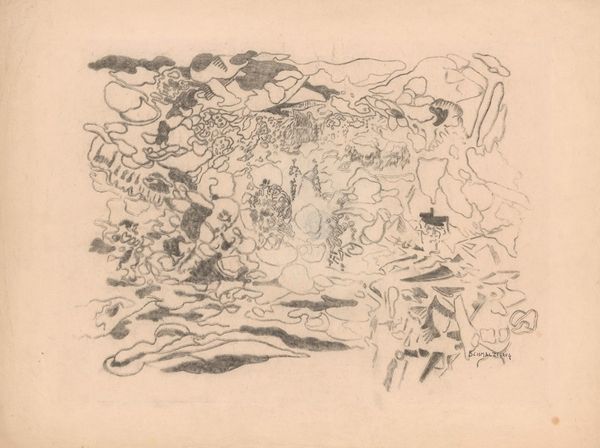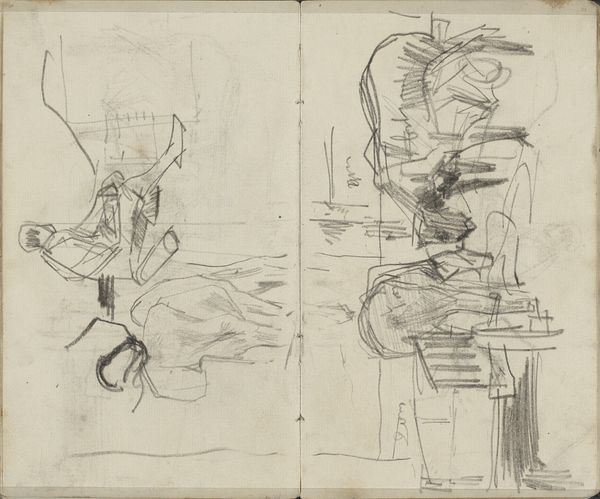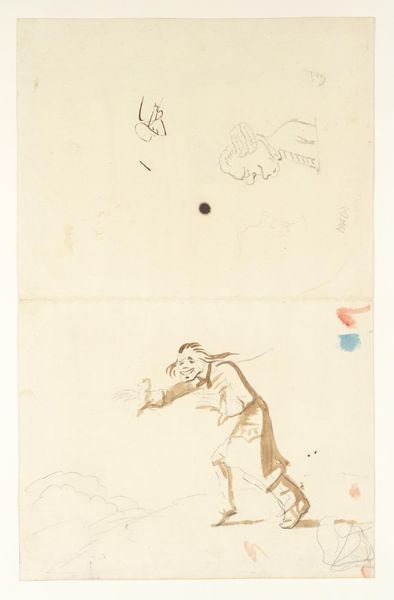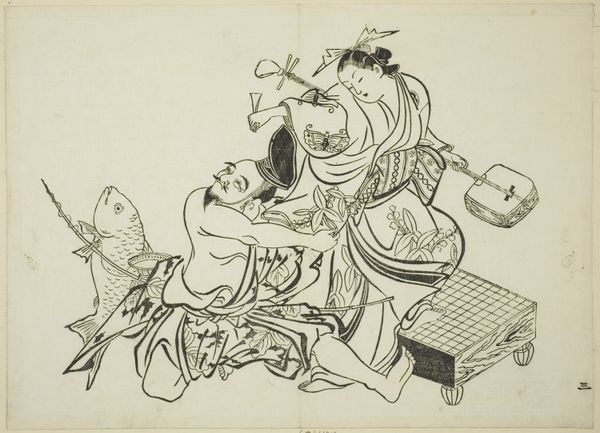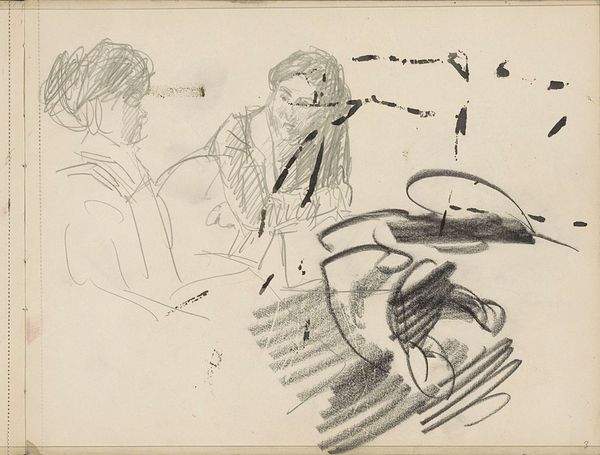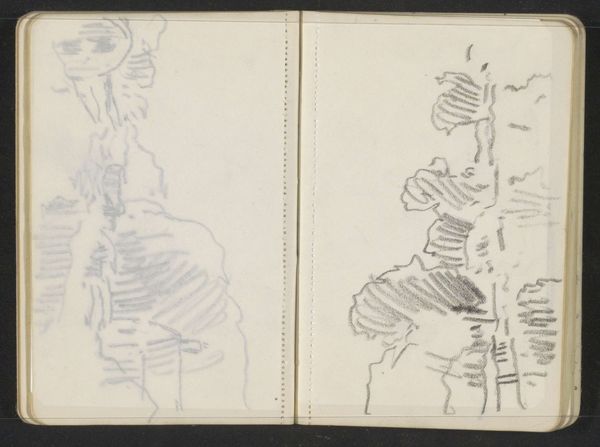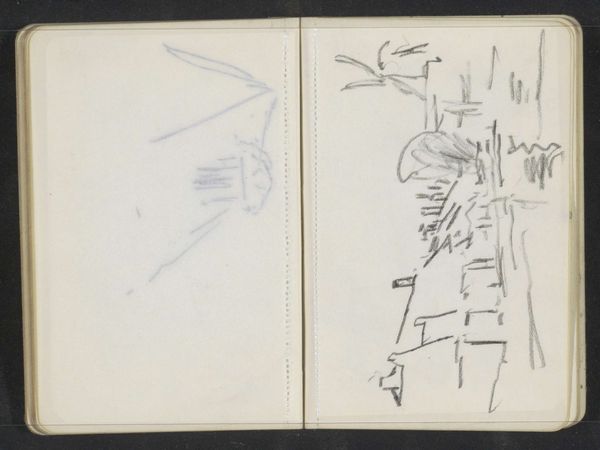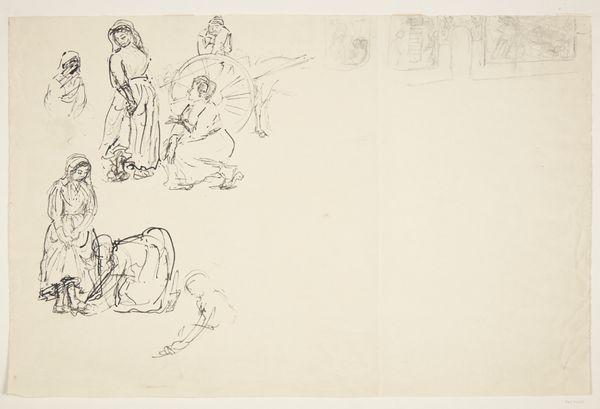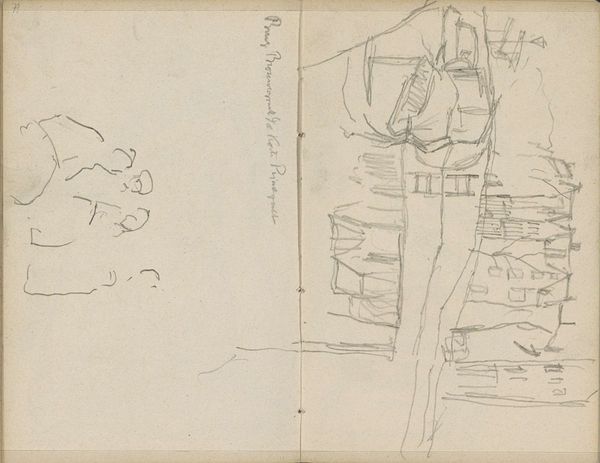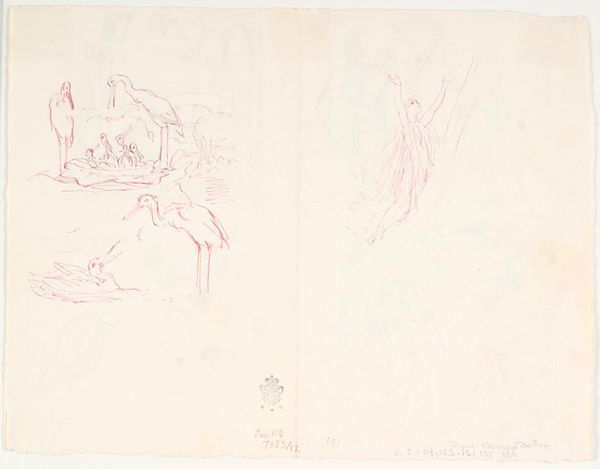
Dimensions: height 240 mm, width 325 mm
Copyright: Rijks Museum: Open Domain
Editor: Here we have Tsukioka Kōgyo’s “Scene uit het Noh theaterstuk 'Utsubozaru',” created in 1899, an ink drawing on paper. It feels like a snapshot, a captured moment from a play, but I am unsure of the meaning behind it. What stands out to you when you look at this artwork? Curator: My eyes immediately focus on the figures, and the stark contrast between the performer in the exaggerated mask and the other characters. Masks in Noh theatre are not merely disguises; they are vessels of concentrated emotion and cultural memory. This particular mask, paired with the figure’s stance, suggests a narrative steeped in folklore, likely addressing themes of transformation and identity. Have you considered how the mask distorts, yet simultaneously conveys deeper truths? Editor: I see what you mean, like it's more than a costume, the mask communicates something essential. But who are the other characters? Curator: The figure with the towering headpiece and ornate robes appears to be of high status. His presence, along with the other calmer figure next to him, signals a societal dynamic at play. Note the seemingly nonchalant attitude; how does their calm demeanour in relation to the masked figure evoke possible stories? Editor: Perhaps a commentary on social hierarchy and performance? The drawing uses so few lines, yet communicates so much! I’m left wondering about the meaning, hidden in plain sight. Curator: Precisely. Even the deliberate blank space enhances this sense of profound minimalism characteristic of the Ukiyo-e style. Now, consider how an audience viewing this drawing in 1899 would have instantly recognized and related to these symbols, drawing upon shared cultural understanding. What resonances might they find lost on contemporary viewers? Editor: So it is about recognizing familiar archetypes… I see, the symbols create meaning for those that know the cultural stories! Thank you. Curator: Indeed. The true power lies in revealing continuities and shifts in our shared symbolic vocabulary.
Comments
No comments
Be the first to comment and join the conversation on the ultimate creative platform.
